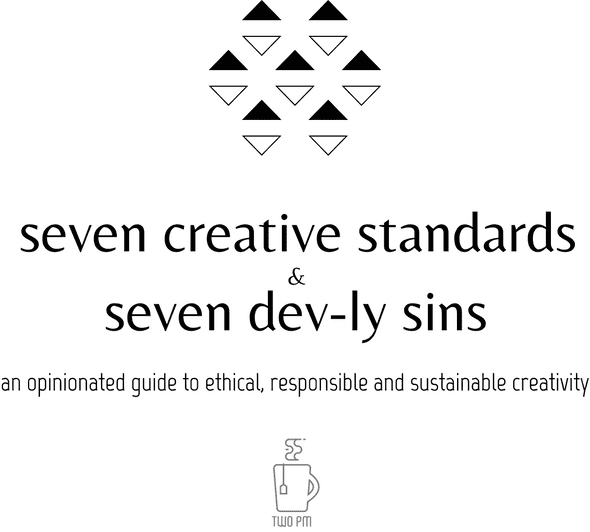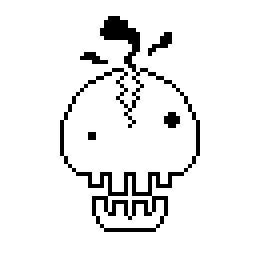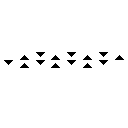Seven Standards: 6. Be Open
April 10, 2019

This is part six of our series “Seven Creative Standards and Seven Dev-ly Sins.” You can read the rest of the series here or learn more about us at twopm.studio/about.

6: Be Open
Last time we talked about how communication with your audience is a key part of aiming higher as a creative. This time I’m going to talk about the value of openness and community in general. It’s very common to fear transparency, especially in creative industries. Typically this stems from worry about your own legitimacy as a creator or from fear of being copied. While these aren’t irrational, they certainly tend to be exaggerated.
Here I use the term openness to mean a willing transparency; rather than conducting 100% of activity in public view (i.e. open source software), transparency means externalising your principles, motivations and logical reasons for major decisions. It also means sharing works-in-progress and your processes, sharing your thoughts and feelings throughout the process and even sharing your frustrations, triumphs and disappointments. Openness means putting a human face on a product and letting those outside see the real work involved in creating.
Of course, as in all things there is a balance. The line I aim to draw here is to avoid focusing on communication to the detriment of your own productivity or satisfaction. We want to be transparent for mutual benefit to our users, our creative peers and ourselves, but where the transparency comes at too high a cost, the trade-offs must be made. Over-engagement online can lead to feelings of inadequacy or obsession if not tempered by some other source of self-esteem. Inevitably, to open your project and yourself up is also to invite vulnerability to criticism. For some people and some projects, this standard needs to be carefully weighed against the others.
“Over-Openness” however, is not our “Devly Sin” as it is not a categorical failure, merely a miscalculation. The deeper error is to see the creative process as something to be hidden or hoarded. Creativity is not some superpower or magical talent - it is available to all to be practiced, honed and trained. Our “Devly Sin” is to Restrict Access, keeping others from seeing, knowing, or taking part in creativity. On one end of the spectrum, this is the Denied Developer where creative works are presented as a perfect finished project, summoned out of the ether, denying the drawn out process of chipping the stone away to reveal the sculpture within. On the other end is the Creators Club where creativity is guarded behind doors as something only the elite or members of a particular group can (or should) be allowed access to. Whatever form this takes, these sort of practices never lead to strong, robust, interesting communities or creations, but stifle development and instead foster meaningless arguments.

Where to be Transparent - Business
There are a few key areas that it’s pretty easy to be transparent about. If a fan, friend or internet stranger wants to know about your basic business principles I think you should be able to provide answers. For example:
- How do you aim to make money?
- What are your plans for the future of your projects?
- What marketing approaches and channels are you pursuing?
It might seem at first that we’re giving away all our valuable secrets, all the things that differentiate us from our peers. This rings truer in some business domains than others but a surface level answer can always be given. Most creative industries have the distinct advantage that they are not functioning as zero-sum-games. Holding your cards close to your chest can give you some small advantage, but when everyone starts to do it we all lose more than we gain.
By feeding a culture of openness we all get to learn from one another and improve much faster as a result. You are not competing with your peers as often as you think you are, especially when talking about artistic or entertainment focused pursuits. In these industries many seasoned professionals have expressed concern when newcomers have drawn battle-lines and expressed an “us vs. them” mentality. At least on some level we are all in this together.
The best heuristic for this to my eye is to default to being open unless there is a clear reason to be opaque. Does this mean writing about every facet of your process? Not at all. Feel free to do so but openness can be as simple as answering the questions you’re asked honestly and earnestly. Some startups have started taking this to the extreme, completely opening up their revenue.
Once again, you may be asking why we should bother being open in the first place. The answer is simple, to create a genuine & trusting connection between you and your audience. An audience that trusts you will stick with you long-term and let you build a business that lasts for many years.
Where to be Transparent - Creative Process
This one is even easier than business transparency. Whatever the medium you choose, be it physical or digital, and whatever fundamentals you work with (words, pixels, inks, code) the same rules apply here. We raise the standard of everyone’s work when we share our own insights into process. There’s been massive growth in this space thanks to YouTube tutorials and Twitch streams by open creators. I’m sure you’ve learned something from these platforms before and we’ve even seen this become an entertainment niche of its own, opening up brand new pathways to creative business online.
Sharing your process can transform your relationship with your audience. Your most dedicated fans will love peeking behind the curtain and they can even provide valuable feedback and tips. If you develop a close relationship with your fans it gives you a massive insight into why people enjoy the work you produce. In some circumstances (e.g. with the rise of Patreon and other subscribers services), this “behind the curtain” look can even provide a revenue stream to creators from fans keen to support and further appreciate the works they already love.
The final, and potentially most compelling, reason to expose your process is inspiration. In an earlier article we described creativity as exposing yourself to a wide range of ideas, breaking them down and recombining those elements based on your unique perspective. Exposing process is the other side of that interaction, the more we share the more others can draw on our discoveries and push themselves forward. In turn, we can hope they will return the favour over time.

Community
While transparency itself will allow you to create and grow a community around your work, there is a larger community that will form on its own as continue to release projects. Unfortunately, while a community may form on its own, they are notoriously difficult to manage and keep civil.
Whether you like it or not, if your work begins to garner attention you will be thrust into the position of leading your community. There are many approaches to community management and there is certainly no right answer, it varies massively depending on your audience and your personal beliefs.
It may be tempting to ignore this responsibility when it’s thrust upon you. After all most of us come to creative pursuits for the work and this is a distinct distraction from actually producing your main content. However, there are huge benefits to engaging with your community.
Know Your Market
Perhaps the most obvious benefit is that from a straightforward business perspective knowing your audience allows you to target them better. By listening to and communication with the community you can learn what parts of you work they live and which, from their perspective, could be improved. This feedback cycle is the backbone of sustainable creativity and is invaluable to aiming to achieve more and more over time.
Now, this methodology can sound dangerosly close to “selling out” depending on how you look at it. As creators we want creative freedom and catering entirely to your audience can rob you of this ad su
Know Yourself
Whether your are conscious of it or not you are sending a message about your perspective on the world through your work. And inversely, whether they know it or not your audience is connecting with you emotionally via that message.
You have the potential to create massive positive impact for these people with relatively little effort on your part. Just acknowledging and engaging with your audience will let them feel validated and understood on a level that is often reserved for only the closest of friends. To me this is one of the most rewarding aspects of creativity, to connect with a total stranger in a profound and deep way.
This isn’t just a one-way benefit though, your community holds a mirror up to your work and by extension to you yourself. Seeing the themes and messages that resonate with your audience can put you in touch with aspects of your own personality that you may never have noticed or accepted.
Managing It
Ok, so I’ve told you a load of reasons to engage with and manage your community but I haven’t given you anything actionable… And there’s a reason. I don’t think I can actually tell anyone how their community should be run. It’s far too subjective. The community around my work is still very small and as a result I haven’t had to deal with a lot of the common pain points when a community starts to scale.
So, instead, I will lay out some of my thoughts on the type of community I would like to foster around my work:
-
We cannot and should not all agree
Rather than avoiding conflict we must accept and manage it maturely. We should celebrate diversity of opinion, there are no lines between us.
-
We should restrain ourselves from banning or exiling community members reflexively
Until spam or trolling becomes a significant issue I would prefer to see those comments ignored rather than removed. Heavy handed moderation can be successful and sometimes becomes the only option, but it is far from ideal.
-
I will strive to express my opinions clearly, calmly but firmly on all community matters
My word is not gospel but I have a responsibility to attempt to understand the current community sentiment as a whole. In turn, it is my responsibility to let the community understand our perspectives while acknowledging theirs.
And so reads the Sixth Standard:

Let yourself be reflected honestly in your work, and encourage that in others. Be inviting and accepting; sharing makes us all stronger.

This is part six of our series “Seven Creative Standards and Seven Dev-ly Sins.” You can read the rest of the series here or learn more about us at twopm.studio/about.
Written by Ben (@vivavolt) and Ricky (@iammonshushu) at TwoPM Studios in Brisbane, Australia.